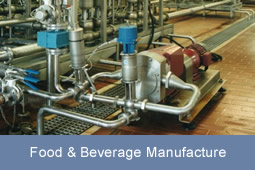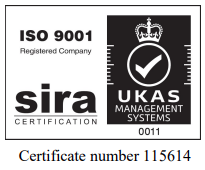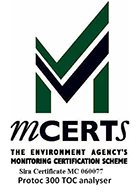The ability to reliably measure turbidity within potable water treatment processes is important to indicate effective treatment. To ensure the most effective and reliable monitoring at Barsham water treatment works in Suffolk, an alternative approach to the more conventional off-line, flow through measurement, was investigated by Essex & Suffolk Water. Whilst currently, direct probe measurement has not been extensively applied to potable water quality measurement, this style of installation at Barsham WTW has proved very successful.
The Barsham WTW abstracts water from the River Waveney and supplies a large area principally the Lowestoft and Beccles districts. Instrumentation has been installed throughout the water treatment process to measure water quality including at the point of abstraction, during treatment and to monitor the quality of potable water into supply.
One of the key measurements is performed immediately after raw-water treatment using a flocculated clarifier where ferrous coagulant and a poly-electrolyte are used to improve the physical water quality (by removing suspended solids). Traditionally, a bypass stream of the flocculated water would continuously feed an off-line turbidity instrument which reports the clarity of the sample using a nephlometric measurement (90º light scatter methodology). However this style of installation can present technical issues.
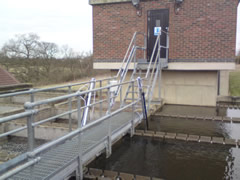 Firstly, it is sometimes not possible to position the instrument immediately close to the clarifier. Since the sample has a residue of coagulant or coagulated particulate, this material readily sticks to any surfaces including the sample transfer line and indeed within the instrument. Typically the integrity of the sample is maintained when the flow of sample along the transfer line, remains constant. However from time to time, material break-off occurs causing artificial spiking of the turbidity. Material will also become dislodged when operators open taps to take discrete samples or when the sample flow is interrupted for maintenance purposes. In all cases, these false positives can trigger alarms on telemetry requiring operators to attend site to investigate. Furthermore, the coating of the optical flow cell within the turbidimeter can be thick and may require regular manual cleaning; which may result in an unacceptable level of maintenance.
Firstly, it is sometimes not possible to position the instrument immediately close to the clarifier. Since the sample has a residue of coagulant or coagulated particulate, this material readily sticks to any surfaces including the sample transfer line and indeed within the instrument. Typically the integrity of the sample is maintained when the flow of sample along the transfer line, remains constant. However from time to time, material break-off occurs causing artificial spiking of the turbidity. Material will also become dislodged when operators open taps to take discrete samples or when the sample flow is interrupted for maintenance purposes. In all cases, these false positives can trigger alarms on telemetry requiring operators to attend site to investigate. Furthermore, the coating of the optical flow cell within the turbidimeter can be thick and may require regular manual cleaning; which may result in an unacceptable level of maintenance.
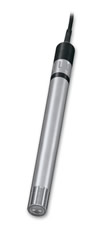 To improve the system of monitoring, technicans from the water company commissioned PPM to conduct a three month trial installation using the IQ Sensor Net Visoturb turbidity system. The measuring technique uses a robust sensor directly immersed into the clarifier by the v-notch measuring the clarified water without the need for any sample transfer. Consequently, direct in-situ measurement has the best chance possible of reporting the true turbidity with the best possible speed of response. The sensor is automatically cleaned using compressed air during which all signals are held to telemetry to prevent erroneous readings and false alarms.
To improve the system of monitoring, technicans from the water company commissioned PPM to conduct a three month trial installation using the IQ Sensor Net Visoturb turbidity system. The measuring technique uses a robust sensor directly immersed into the clarifier by the v-notch measuring the clarified water without the need for any sample transfer. Consequently, direct in-situ measurement has the best chance possible of reporting the true turbidity with the best possible speed of response. The sensor is automatically cleaned using compressed air during which all signals are held to telemetry to prevent erroneous readings and false alarms.
During the three month evaluation, daily samples were taken and the instrument's reading was tabulated to establish if the instrument could provide reliable measurement without regular maintenance. The trial established an excellent correlation with the laboratory results and demonstrated that the automatic cleaning regime could maintain the sensor for extended periods of time without intervention.
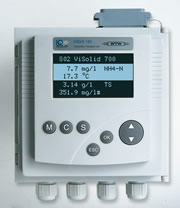 The culmination of this work was a purchase order for a permanent monitoring system. The procurement of a DIQ/S182 display unit and two Visoturb sensors with automatic air cleaning would allow for independent measurement of the two clarifiers using a common controller. The installation was fully commissioned towards the end of 2008 and has proved to be a great success. Operators still inspect the installation on a monthly basis as part of a preventative maintenance regime but have the confidence that the instrumentation has the ability to work reliably for extended periods of time leaving them free to attend to other duties.
The culmination of this work was a purchase order for a permanent monitoring system. The procurement of a DIQ/S182 display unit and two Visoturb sensors with automatic air cleaning would allow for independent measurement of the two clarifiers using a common controller. The installation was fully commissioned towards the end of 2008 and has proved to be a great success. Operators still inspect the installation on a monthly basis as part of a preventative maintenance regime but have the confidence that the instrumentation has the ability to work reliably for extended periods of time leaving them free to attend to other duties.
Since the Visoturb technology is robust and accommodates a dynamic measuring range, it is principally designed for waste-water compliance monitoring. However since various internal calibration files allow measurement ranges to be set 0.001-0.4000 to 4,000 NTU full-scale combined with the internal diagnostic measurements, the capability of the sensor also extends into potable water treatment applications. The internal reference measurements also maintain the sensors factory calibration which is digitally stored within the sensor. Communication to the controller uses an internal BUS system capable of large sensor to instrument separations allowing the controller interface to be conveniently located within the treatment plant.
Essex & Suffolk Water treatment works technicians found that "this instrument has proved to be particularly suitable for samples that can have a seasonal burden of algae and a history of carry-over of flocculated particles due to high rise rates and variable water temperatures".
This application therefore demonstrates the need for technicians, engineers and scientists to be flexible in their approach when looking to solve problematic applications especially when the industry is under pressure to become more time and cost efficient.
We would like to thank the employees of Essex & Suffolk Water involved in this project for their contributions to this article which will hopefully inspire others to consider alternative approaches to traditional applications.
For further information on how PPM can support your instrumentation requirement please contact:
Steven Tuck
Pollution & Process Monitoring Ltd
Tel: 01732 882044
Fax: 01732 780190
Email: s.tuck@pollution-ppm.co.uk


